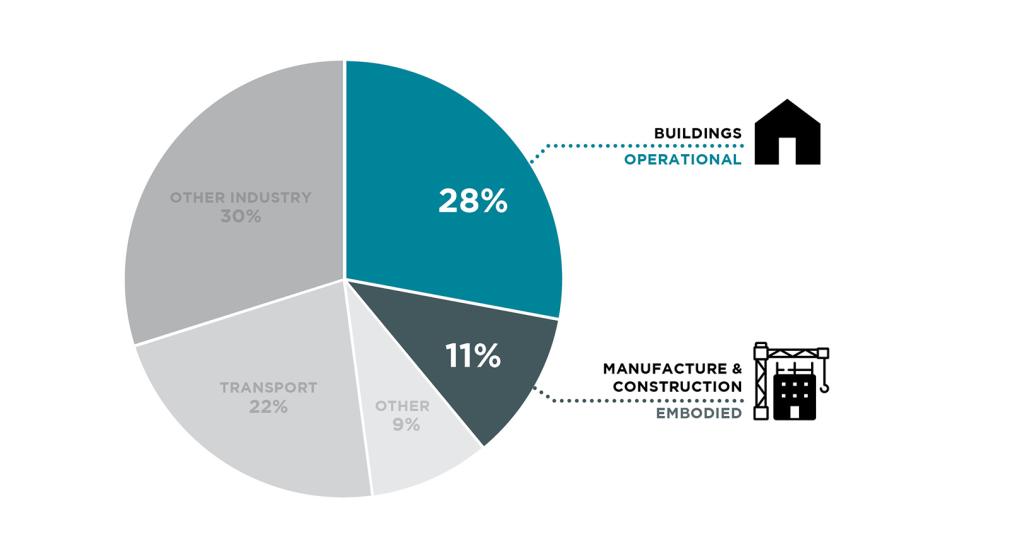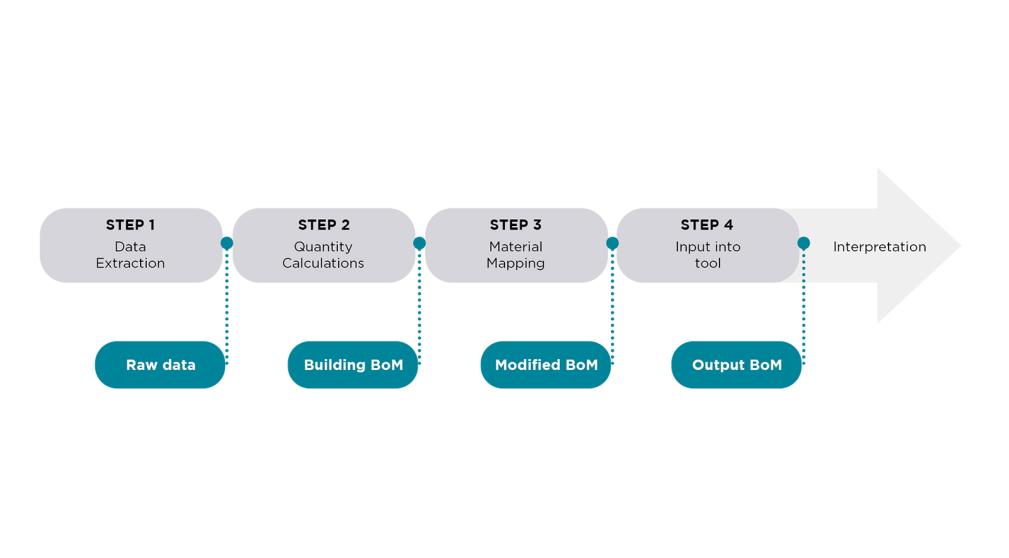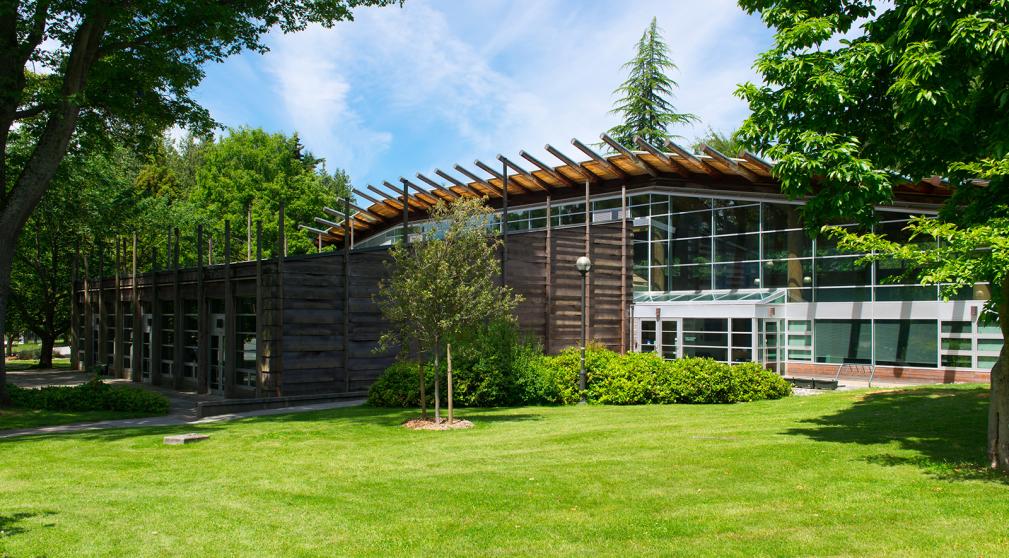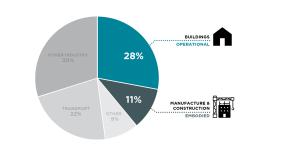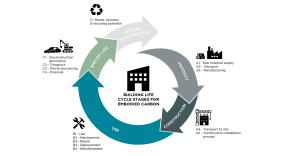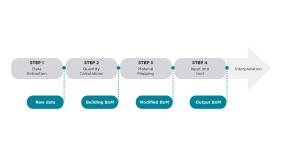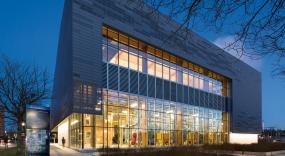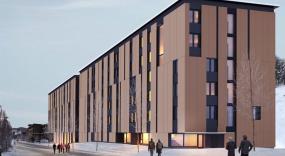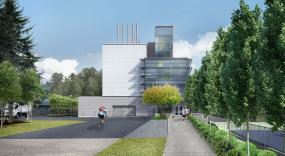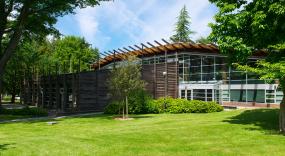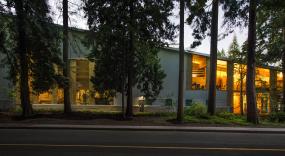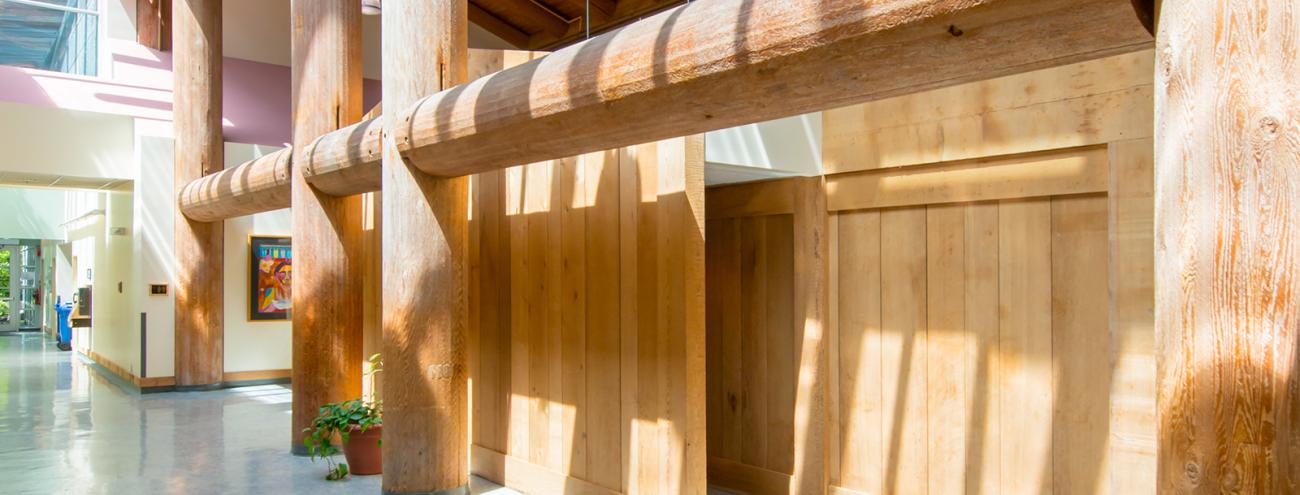
Embodied Carbon Pilot
How can we estimate embodied carbon in buildings to achieve GHG emissions reduction targets? This project identifies challenges and solutions for enabling more effective use of life cycle assessment (LCA) and benchmarking to drive embodied emission cutbacks.
Addressing embodied carbon in buildings through LCA
Buildings are significant contributors to the raising levels of greenhouse gas (GHG) emissions. Currently, buildings are responsible for 38% of total global emissions, 10% of which are generated by the embodied carbon emissions from the building materials (UNEP 2020). These embodied emissions from the full lifecycle of building materials: resource extraction, manufacturing, installation, replacement, and disposal at the end of their useful life.
LCA is the scientific method used to assess the environmental impact of buildings and their use is becoming more common in green building programs and sustainability policies. However, these assessments are complex and require data on both the quantities of materials uses in a given building and an estimate of each material’s or product’s environmental impact.
Additionally, in order to develop effective emissions reduction targets, these practices must be standardized. There are many variations and approaches to quantifying building materials and estimating environmental impacts. These variations, however, make it challenging to demonstrate that a building design has in fact achieved the desired level of emissions reduction.
The Embodied Carbon Pilot, concluded in 2022, was a multi-year research study on the practice of conducting life cycle assessments (LCA) for quantifying embodied carbon emissions from building materials. Through this project, we identified a number of factors that significantly influence the results of embodied carbon LCAs, as well as common challenges encountered by LCA practitioners, and considerations that design teams and policy-makers must make when developing policies or conducting assessments.
This was done through conducting LCAs on numerous buildings in British Columbia, including on the UBC Vancouver and Okanagan Campuses, and analyzing both the processes and results. These buildings represent a range of functions, designs and material choices. The collection of building information and LCAs were done in partnership with Athena Sustainable Materials Institute, UBC Campus and Community Planning, City of Vancouver, and the Zero Emission Building Exchange (ZEBx).
One of the results is a Bill of Materials (BoM) Methodology which details and refines protocols to quantify the building materials and generate the building’s bill of materials—a standardized list of the different materials and quantities in the building. The Methodology defines a list of parameters that need to be determined before conducting an LCA, as well as a set of steps to create a detailed BoM of a building that can then be used to conduct the assessment.
Embodied Carbon Benchmarking Pilot
The Embodied Carbon Pilot also conducted a preliminary study on the processes and implications of creating embodied carbon benchmarks for buildings. Benchmarks are used by policymakers to set targets for emissions reductions, but require assessments to be reliable and comparable – a challenging prospect when most building projects are unique.
The Pilot included an exploratory case study adapting the BoM-based benchmarking methodology approach proposed by the National Research Council Canada and Athena Sustainable Materials Institute in the National guidelines for whole-building life cycle assessment. The case study was supplemented by policy and best-practice review in consultation with the industry, to better understand the challenges in reliability and comparability of LCA assessments, and recommend improvements for benchmarking purposes.
Pathways towards informed embodied carbon policies and targets
Multiple levels of government are moving towards embodied emission standards and targets, as one pathway to help achieve Canada’s climate commitments. However, this is an emerging area of policy and practice. Through the Embodied Carbon Pilot, we were able to gain an understanding of the current state of LCA practice in the building industry and challenges that need addressing through more effective policy.
The learnings from the Pilot are informing embodied carbon policy in UBC's new Climate Action Plan 2030. In addition, through contributions to national-scale working groups, with many of the partners on this project, we are helping to develop and improve tools, databases, and other resources to advance the building industry’s ability to use LCAs to assess embodied carbon emissions from building materials, and support owners, developers in making choices that reduced GHG emissions.
Experiences and learnings from the project will continue to be presented to policymakers and practitioners, both at the municipal and provincial levels. Additionally, recommendations and guidelines will serve as a stepping stone for future work on LCA policy and benchmarking.
Resources
Zebx Embodied Carbon Playbook [2021]
Partners
Zero Emissions Building Exchange (ZEBx)
is a collaborative platform that strengthens the public, private and civic capacities for zero emission buildings, and fosters innovation through dialogues, project tours, curated research and training to accelerate market transformation in BC.
City of Vancouver
has a long history of climate action. Most recently, Vancouver declared a Climate Emergency and is leading Canadian cities in the development of policies and regulations around the reduction of GHG emissions.
National Research Council Canada (NRC)
is Canada's largest federal research and development organization advancing knowledge and leading-edge technologies to find creative, relevant and sustainable solutions to current and future economic, social and environmental challenges.
UBC Campus + Community Planning
is a team of experts in sustainability, planning, design, engagement, and community building dedicated to building a vibrant and sustainable campus to create healthy learning and living environments.
